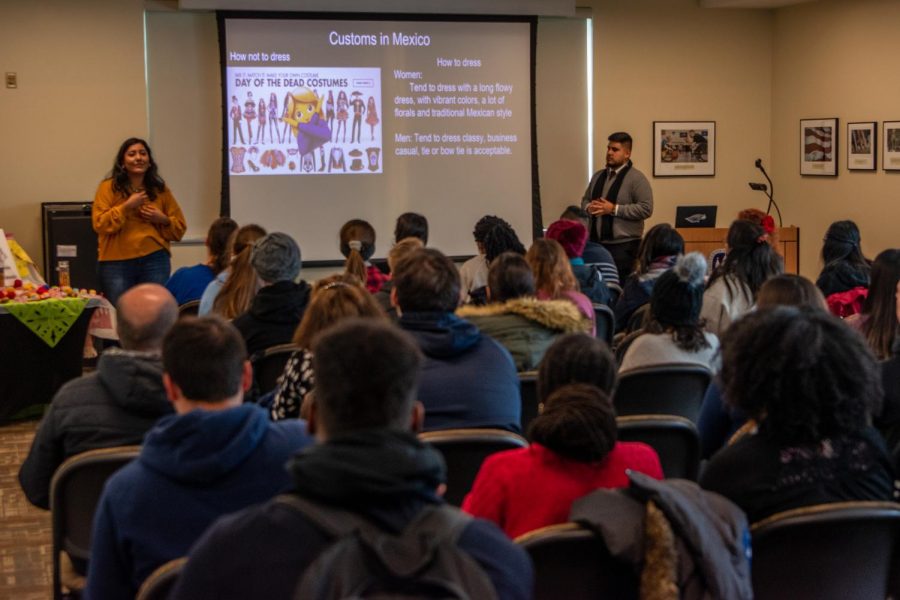Day of the Dead: It’s more than just sugar skulls and entertainment
A presentation was given at Dia de los Muertos in the University Center for Latinx Day Heritage.
November 4, 2019
When most people think of Día de los Muertos they think of sugar skulls and colorful celebrations, but the holiday is much more meaningful than that.
A lecture was held as part of the Latinx Heritage Lecture Series with the help of students, Spanish Club and Luzma Ede-Hernandez Oct. 31 in the UC to help educate more students about the origins and significance of Día de los Muertos.
“I think that informing students on the different cultures we have here on campus tends to help them in a way. It can help them in the future or anytime something like this may come up in a conversation. They can have something to comment on,” said Ramiro Quintana, who was a key presenter along with Nayeli Govantes Alcantar.
Día de los Muertos is a traditional Mexican holiday that is also celebrated in other Latin American countries from Oct. 31 to Nov. 2, and its main purpose is to celebrate the lives past loved ones.
Upon arriving to the lecture students received mini sugar skulls. They were also asked to write down the names of past loved ones on a sticky note to place on the ofrenda, also known as an altar, at the front of the room.
Decorated sugar skulls, or calaveras de azúcar, are one of the many symbols used during the holiday and they sort of represent the way Mexicans celebrate death. On Dia de los Muertos, death is not bitter, but it is something sweet. Death is not sad or sorrowful, it is actually full of life once again.
Along with sugar skulls, people honor the deceased by placing marigolds, candles, pictures, food and beverage on the different steps of the altar. It is also common for families to visit gravesites with these gifts and to hold vigils.
Quintana explained that these gifts are placed on altars and graves so that they can aid the deceased through their journey in the land of the dead. Brightly colored flowers and candles are left to guide past loved ones through the different stages that can take several years.
“It’s kind of like that light at the end of the tunnel that guides them to their final resting place,” said Quintana.
Scholars trace the origins of the modern Mexican holiday to the indigenous observances dating back nearly 3,000 years to an Aztec festival dedicated to the Goddess Mictecacihuatl, Queen of the Underworld.
Over the years, the traditions changed with the influences of the Spanish Empire and Catholicism to shape the holiday into what it is today.
Student Jose Uribe said it has been a new experience learning more about Dia de los Muertos since his family doesn’t celebrate it, and he is glad that more students are being exposed to the holiday on campus.
Graduate student Jeesenia Zavala said she also believes it’s important for students to be educated about different traditions and cultures, especially around campus.
“I appreciate that they were showcasing more of the Latino culture, and how people have different perspectives of what happens after death, since death is inevitable.”













